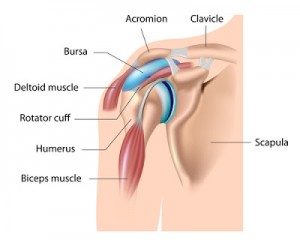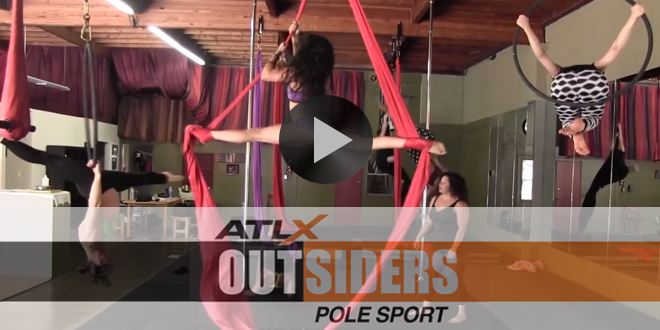By: Dr. Phil Wagner, M.D.
 As sports contracts soar in value and the availability of new technologies increases, it seems our perceptions of solving injuries changes rapidly as well. For example, 20 years ago, physicians and therapists were prescribing rotator cuff isolated movements as the solution to most upper extremity issues.
As sports contracts soar in value and the availability of new technologies increases, it seems our perceptions of solving injuries changes rapidly as well. For example, 20 years ago, physicians and therapists were prescribing rotator cuff isolated movements as the solution to most upper extremity issues.
A decade ago, focus shifted to the shoulder blades, the scapula, as the critical foundation for preventing any arm injuries. Only recently, has the scapular strengthening programs come under question to suggest something even further down the chain, the thoracic spine. But we believe all dysfunction begins even lower down the chain, at the foot-ground interaction (GRF), and shoulder pain is no exception to this rule (see: Upper body injuries start from the ground via Sparta Point).
But if you’re taking care of your movement signatureTM and addressing the best lower body mechanics already, what is the best daily complex to address shoulder pain?
What is shoulder pain?
 The majority of shoulder pain results from impingement, a situation also found in 90% of athletes’ hips (see: The most common injury: 90% chance you have it via Sparta Point). Regardless of the location of hip versus shoulder, impingement occurs when soft tissue becomes trapped, usually between bones. This pinching leads to pressure, inflammation, pain and ultimately, loss of function.
The majority of shoulder pain results from impingement, a situation also found in 90% of athletes’ hips (see: The most common injury: 90% chance you have it via Sparta Point). Regardless of the location of hip versus shoulder, impingement occurs when soft tissue becomes trapped, usually between bones. This pinching leads to pressure, inflammation, pain and ultimately, loss of function.
In the case of shoulder impingement, the most common soft tissues that get pinched are the biceps tendon, the supraspinatus (rotator cuff) tendon, and the subacromial bursa.
Therefore, other related diagnoses are:
- Bicep tendonitis (tendinopathy)
- Bursitis
- Rotator cuff tears
The soft tissue becomes irritated and inflamed as they pass through the subacromial space, the passage beneath the acromion, a bony process of the scapula.
Why does it happen?
 In the most general summary, this pain or pinching, from impingement occurs when the shoulder joint can no longer stay centered in the socket as we raise our arm or use our shoulder. Also called swimmer’s or thrower’s shoulder, shoulder impingement is generally from repetitive overhead activity. With these motions, adhesions occur from inflammation. Another cause can be from imbalances, particualry, the pectoral muscles, which internally rotate the shoulder forward pulling the scapula too far forward.
In the most general summary, this pain or pinching, from impingement occurs when the shoulder joint can no longer stay centered in the socket as we raise our arm or use our shoulder. Also called swimmer’s or thrower’s shoulder, shoulder impingement is generally from repetitive overhead activity. With these motions, adhesions occur from inflammation. Another cause can be from imbalances, particualry, the pectoral muscles, which internally rotate the shoulder forward pulling the scapula too far forward.
Objectively, we see this in overhead athletes with low levels of lower leg (LOAD) and trunk (EXPLODE) strength. Their movement signatureTM requires a greater reliance on momentum from the arms to generate force and complete a movement.
If you had only 10 minutes a day…
STRENGTH
The best way to strengthen the shoulder complex against impingement is not just isolated strengthening, but rather improving the timing of tension. An August 2012 study was the first study to find scapular exercises improved shoulder pain and trapezius ratios, but were unable to change the most critical factor, the timing of the muscles during arm elevation. Therefore, we recommend similar movements using a Body Blade, as this rhythmic exercise can affect both strength needs and timing (see: Get Rhythm – New thoughts on how to use the body blade on Sparta Point).
 SKILLS
SKILLS
The main skill deficit of overhead athletes is rotation, particularly in the thoracic spine. For example, Stanford women’s volleyball coaches believe girls suffer shoulder issues from poor thoracic spine use from lack of throwing footballs and baseball growing up. So we use the Lateral Lunge and Rotate (see: How to warm up: part II on Sparta Point) to promote thoracic rotation, with ankle/knee/hip flexion of course. This exercise is superior to rotational movements performed lying down because it involves a focus on the foot-ground interaction.
REGEN
As mentioned above, the largest muscular imbalance is the over-activity of pectoralis, specifically the pec minor. Rounded shoulder posture and forward head posture will cause the pectoralis minor to shorten and bring the shoulder out of the desired center of the joint. So release with a ball as shown below.
To recap:
- Shoulder pain is impingement
- Impingement is caused by pinching
- Bicep Tendon
- Supraspinatus
- Bursa
- Impingement is prevented by improving placement of the shoulder in the socket
- Strength – body blade (timing)
- Rotational mobility (no just thoracic) – lateral lunge and rotate
- Regen – release pec
Unlike the rotator cuff emphasis, then the scapula, then the thoracic spine; this advice will stand the test of time, unless we move to the moon and the ground doesn’t matter.
Dr. Phil Wagner is the founder of SPARTA, a San Francisco-based state-of-the-art science and performance based training facility and program just for athletes. Visit www.SpartaScience.blogspot.com and www.SpartaScience.com for more information.
 ATLX The only sports entertainment television and digital media network fully devoted to everyday athletes, athletic lifestyle and athletic culture.
ATLX The only sports entertainment television and digital media network fully devoted to everyday athletes, athletic lifestyle and athletic culture.




